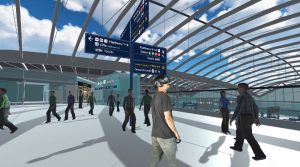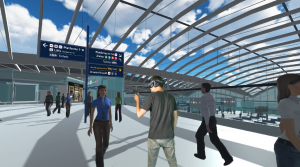As part of its innovation programme, HS2 Ltd is working with design and technology SME, CCD Design & Ergonomics and station designer WSP to develop efficient and stress-free ‘wayfinding’ for the quarter of a million people who will use the new 14-platform super-hub in North West London each day.
The the cutting-edge innovation in developing HS2’s station at Old Oak Common offers the potential for the technology to be used to design other HS2 stations, as well as other great buildings that have to manage large numbers of people efficiently, including sports venues and concert halls.


Once in the digital virtual reality, these passengers of the future will be asked to navigate their way around Old Oak Common to reach meeting points, platforms and to change between HS2 and Crossrail services using the signage included in the current design.
In addition, the team will dedicate a further session to passengers whose mobility is impaired to explore what further assistance they might need to navigate the station.
Eye-tracking technology fitted to VR headsets will monitor in detail how the eye is drawn around the station’s interior, and whether there are any distractions that might contradict or confuse, all of which could hamper easy and stress-free movement.
This will be paired with emotion sensing software that observes the wearer’s facial expressions and monitors heart rate changes caused by the visual stimulus of experiencing the station in virtual reality.
The data collected by CCD will enable HS2 Ltd and station designers to assess and if necessary, refine designs to help Old Oak Common passengers move smoothly and efficiently around the 100,000 square metre rail interchange station.